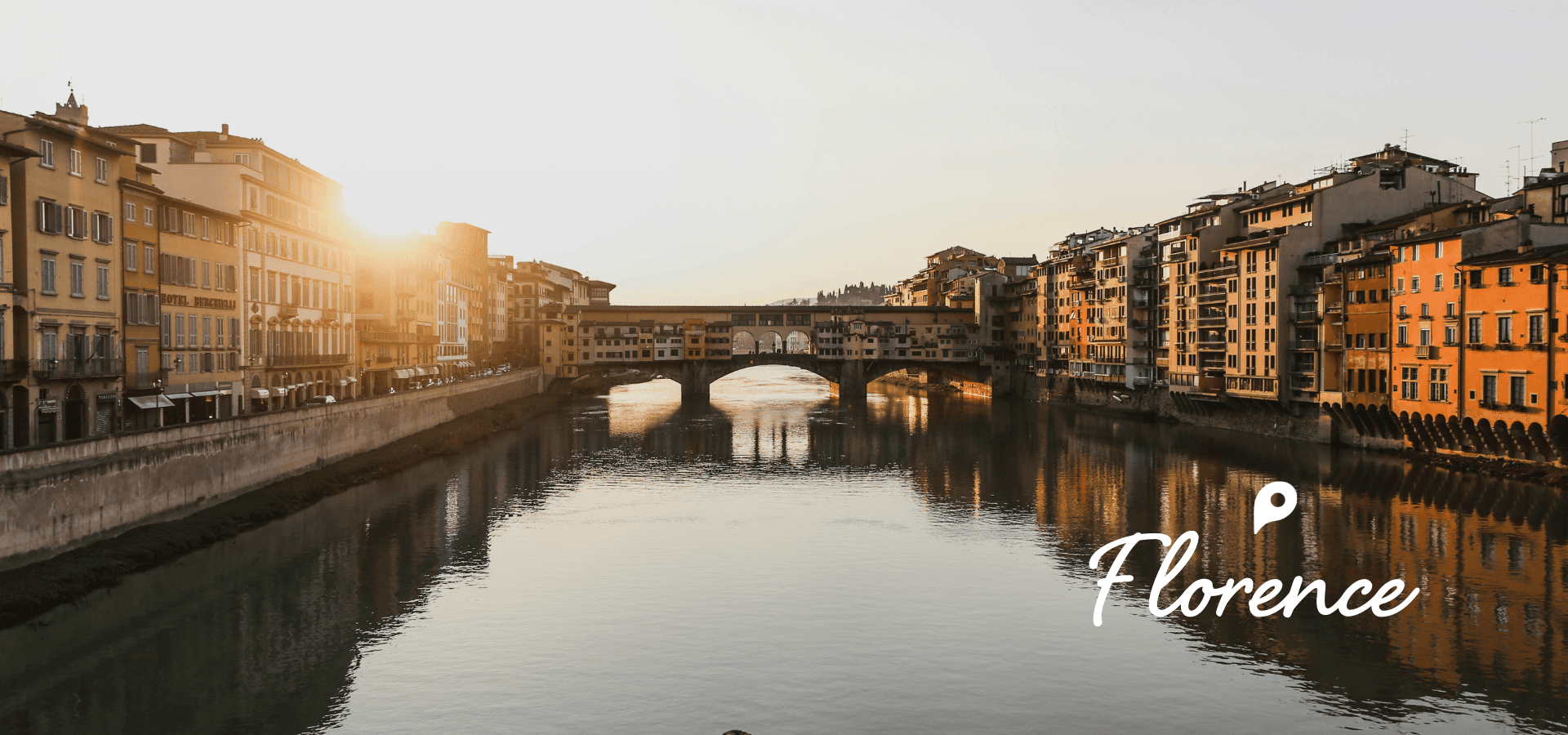Compact enough to dig right in with depth, a city like Florence makes it easy to feel the passion, artistry, and greatness coursing through its veins. And long before the Medicis began commissioning Donatello’s David or Brunelleschi’s Duomo, too. The capital of Tuscany since the days of Julius Caesar and a feast for all five senses, Florence is the Renaissance, not just the birthplace of it.
Best known for its fashion, food, fine wine, and the arts, Florence is a city that needs no words to introduce itself. All it requires is your full attention as you bite into your first bistecca, sway to its street performers in the piazzas, and lay eyes on its legendary works of art and architecture, gardens, galleries, and cathedrals. It’s a city that sings through your senses, simple as that.
In our exhaustive Florence travel guide, we make it easy to experience the city at its best, from its fashion-forward five-star hotels and candlelit trattoria tables to its medieval towers-turned-rooftop bars, rose-scented gardens, market mayhem, and centuries-old craftsmen workshops across the Arno. Ready to dig in deep with us?
Where to Stay in Florence
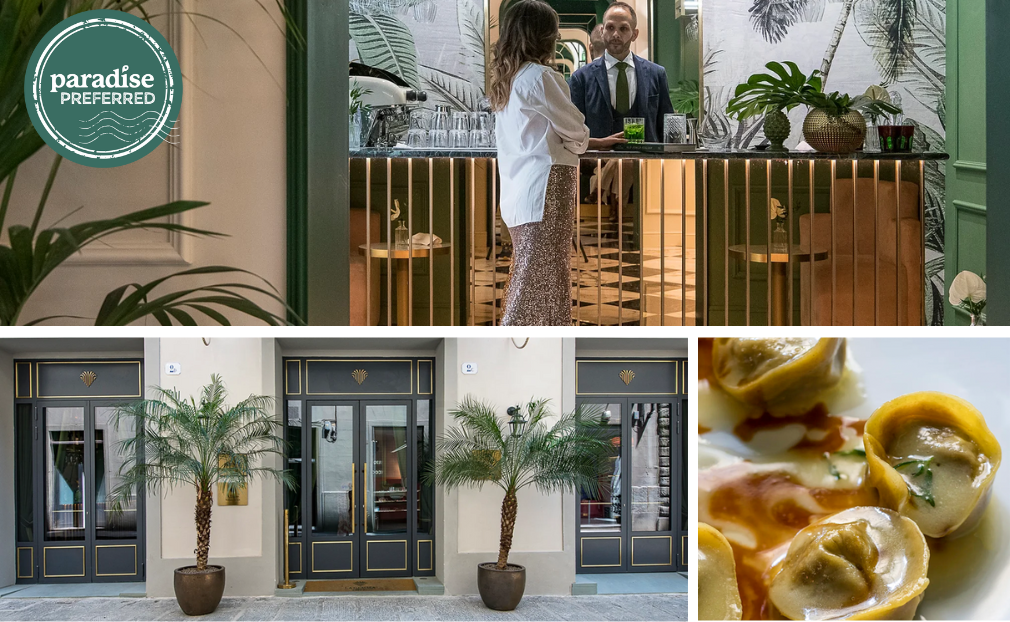
A Design-Lover’s Dream: La Gemma Hotel
Step into the world of Old Florentine palazzo living with a modern twist at La Gemma Hotel. This five-star, family-run boutique hotel in the historic center of Florence opened in April 2023 and is a head-to-toe treat for the eyes. Its Art Deco interiors come in a palette of green, pink, and ivory borrowed from the city’s iconic Duomo, while its indoor and outdoor spaces, Michelin Star chef-helmed restaurant Luca’s, subterranean spa, and speakeasy-style bar don’t make it easy to turn over the keys at the end of your stay.
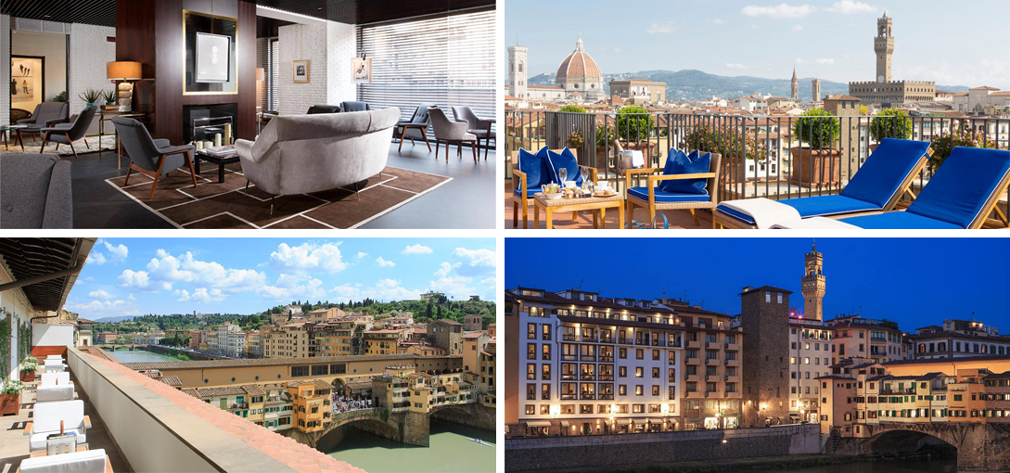
The Riverside Reverie: Portrait Firenze
Part of the carefully curated Lungarno Collection, Portrait Firenze is the one with Ponte Vecchio views and a privileged perch along the River Arno. An all-suite, five-star property owned by the descendents of the legendary shoe designer Salvatore Ferragamo, you can expect fashion to be at the forefront of its design and bespoke guest experience. Portraits of fashion icons like Audrey Hepburn and Brigitte Bardot grace the walls, while guests get special perks like complimentary access to the Salvatore Ferragamo Museum and discounts at the designer’s boutique shop on Via dei Tornabuoni.
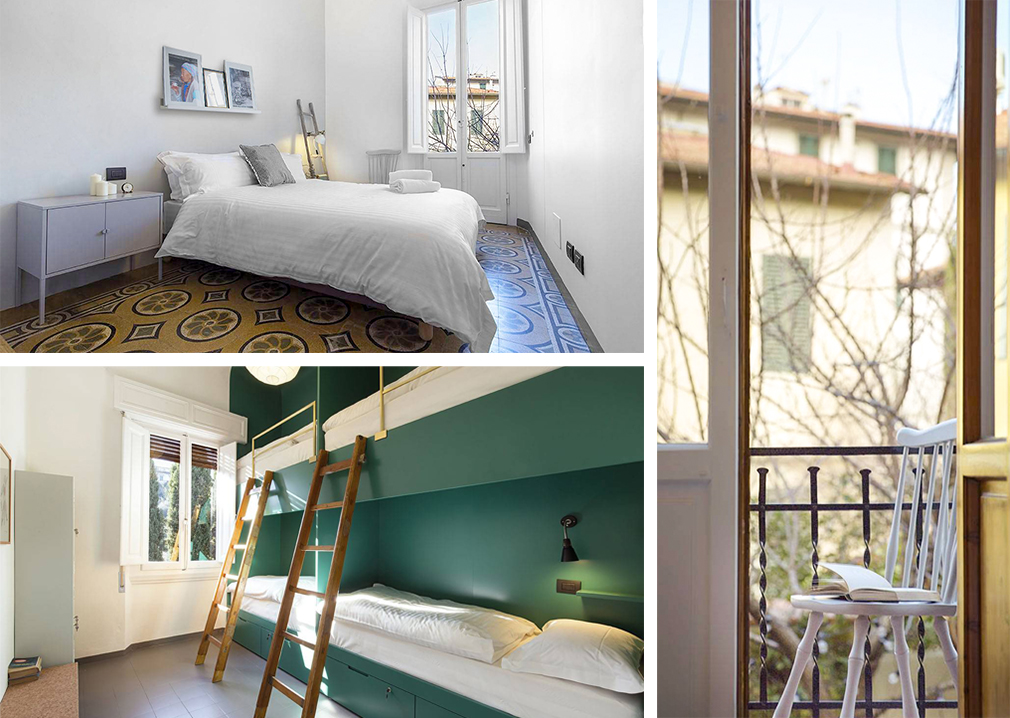
Budget-Friendly and Beautiful: Mòsì B&B
Mòsì B&B is an inviting bed and breakfast on the quieter, more local southern side of the Arno River. Inside of an elegant, turn-of-the-century Art Nouveau villa bursting with Italian vintage details, its cozy rooms range from terraced doubles to a four-bed dorm, making it an affordable and budget-friendly base for backpackers, sure, but also families, couples, and solo travelers seeking a bit more of a social atmosphere and who don’t mind sharing a bathroom. True to their name, a breakfast spread awaits each morning in the homey kitchen, complete with custard cream-filled croissants from a nearby bakery and freshly brewed espresso.

The Old Faithful One: Hotel Annalena
A charmingly simple three-star hotel in Oltrarno and one of Florence’s traditional pensioni, Hotel Annalena is the sort of under-the-radar spot that, once discovered, becomes your go-to home away from home in Florence, as much for its affordability and simple, but solid, amenities, as for its location—backed by the beautiful Boboli Gardens and amidst Oltrarno’s artisan workshops and traditional trattorias. Each of its 19 sun-splashed and climate controlled rooms open up to the adjoining terrace or balcony and there’s a complimentary buffet breakfast served each morning.
Where to Eat in Florence

Worth the Wait: Trattoria Zá Zá
Located in the lively surroundings of the Mercato Centrale, Trattoria Zá Zá has been plating traditional Florentine fare since 1977. They’ve had to add additional dining rooms and tables year after year to meet the growing demand (and long lines) for their mega-menu of delectable dishes like truffled spaghetti alla carbonara, pappardelle pasta in wild boar sauce, and the classic—bistecca alla fiorentina. It’s one of those restaurants where no matter what you order, it’s going to be guaranteed great and worth the wait; a testament to the well-honed recipes of Stefano Bondi, the passionate palate behind Trattoria Zá Zá.
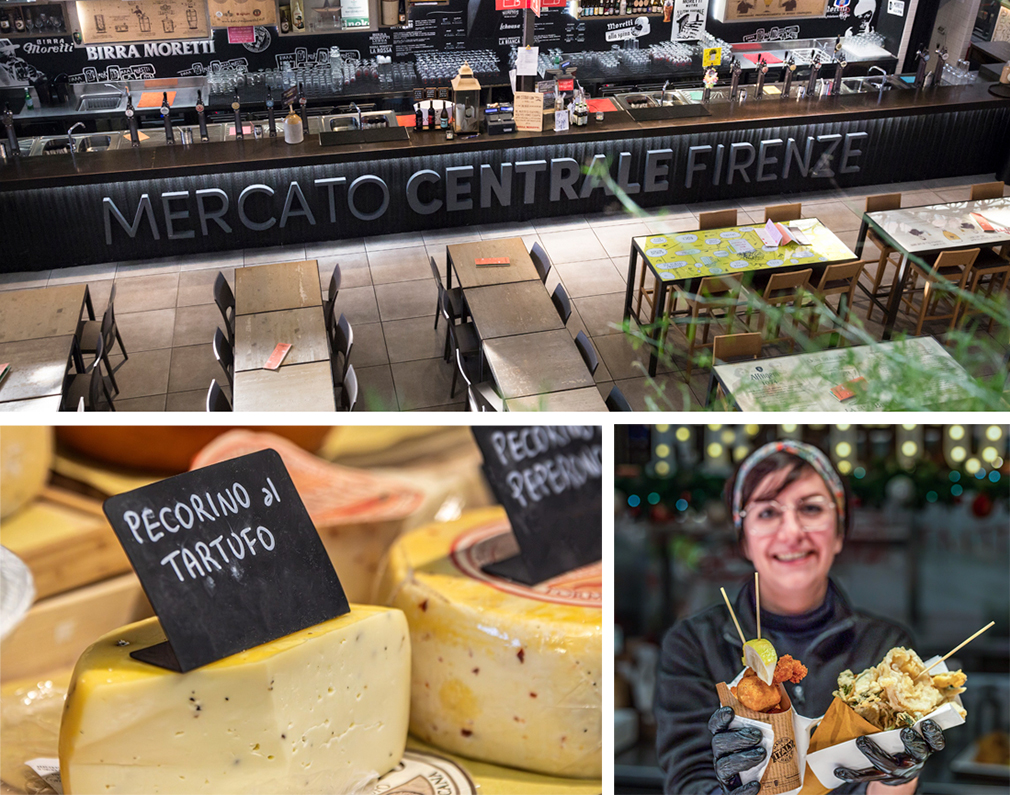
Fresh, Fast & Florentine: Mercato Centrale
The two-tiered glass and iron Mercato Centrale is Florence’s bustling central market and it has been since it was founded in 1874. While the ground floor has mostly stayed true to its roots as an amalgam of stalls selling everything from fresh mozzarella and truffles to pasta, porchetta, and trippa, the upper floor has been transformed into a modern food hall with dine-in pizza, pasta, and gelato vendors, as well as a sushi bar, burger joint, and mixologists at the ready to mix you an Aperol spritz or negroni. In the evenings, live music enters the mix, competing with some of the best ristorantes and trattorias in Florence for dinnertime ambiance.
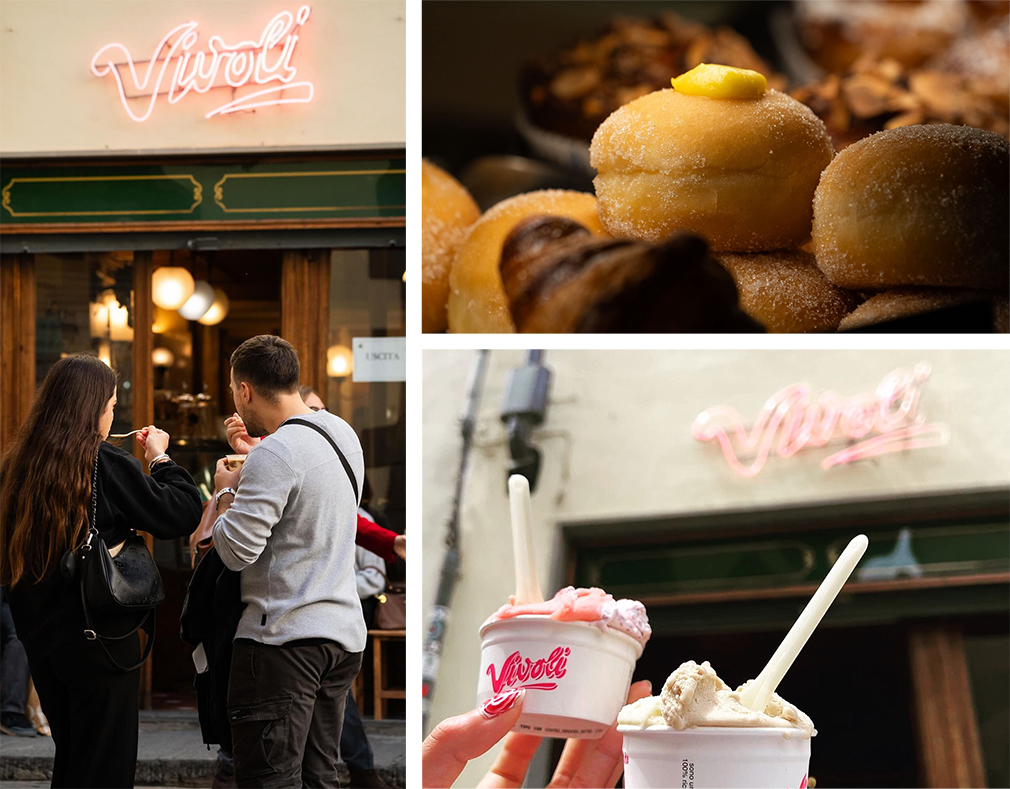
Bucket List Bite: Vivoli
Vivoli is a family-run gelateria that dates back to the 1930s, making it officially Florence’s oldest gelateria. Many will also claim it’s Florence’s best gelateria, too, even before its recent Instagram fame and viral affogato. The adorable, old-fashioned shop is located in the historic center of Florence, steps from the beautiful Basilica di Santa Croce. On their menu are all of the classics, including hazelnut, cream, and pistachio, but also a variety of traditional Florentine frozen desserts, cookies, tarts, and rice pudding.

A Sandwich to Remember: Pino’s
While All’Antico Vinaio has everyone’s attention, it’s not the only place in Florence to get your hands on a panino made to perfection. Salumeria Verdi, or Pino’s as it’s better known, is a family-run sandwich shop near the Piazza Santa Croce. Pino, who still can be found behind the counter, has been making sandwiches on the classic Florentine schiacciata since 1991, and he has a slew of loyal customers to show for it. The menu’s long, but the fan favorites are The Best, Springtime, and Pino’s. Hot Tip: Ask about the daily pasta specials made by Pino’s wife Antonella and order one as a side with your panino. All of it won’t set you back more than around 7 euros.
Where to Drink in Florence

For an Aperitivo with Atmosphere: Locale Firenze
Among the World’s 50 Best Bars, Locale is as much about the aperitivo as the atmosphere. The building itself is a former nobleman’s palace from the 1500s resting on a combination of Roman foundations and medieval-era vestiges. Its statement design of black zinc, plush leather in red, living walls, a floor-to-ceiling backlit back bar, and a glass skylight above it all create just the ambiance to enjoy an anything-but-expected cocktail concoction. In true Italian aperitivo style, don’t be surprised when a tower of complimentary canapés lands on your table shortly after ordering.
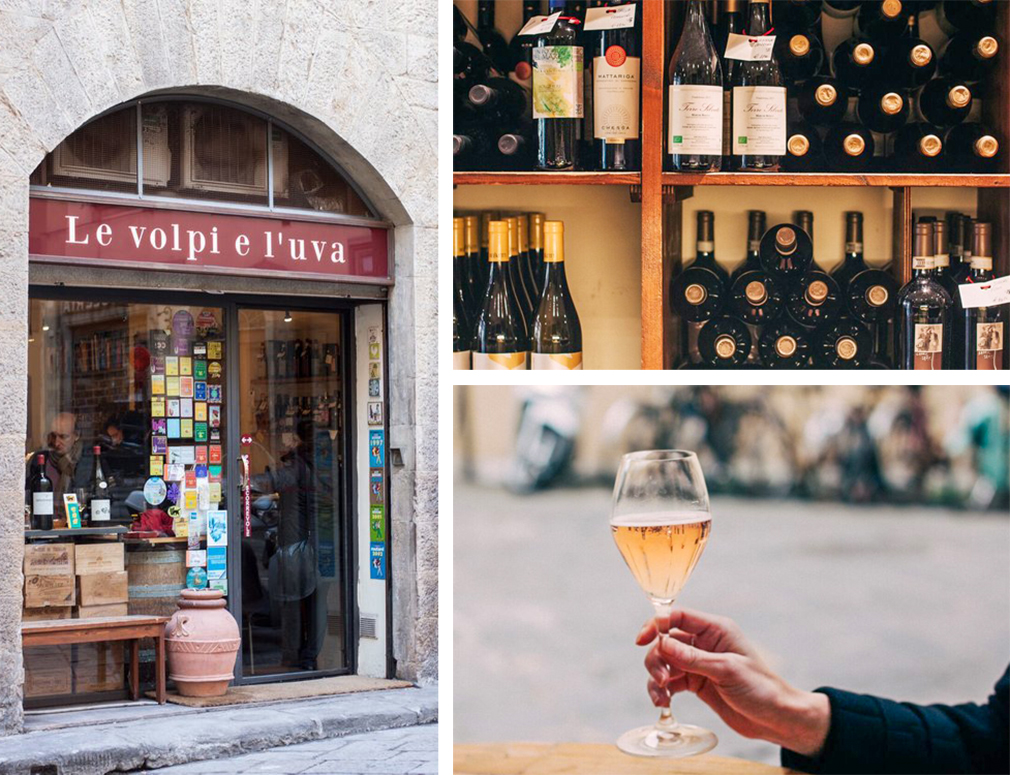
For a Glass of Homegrown Chianti: Le Volpi e l’Uva
Le Volpi e l’Uva is a modern wine bar not far from the Ponte Vecchio in Oltrarno. It’s become known for its noble mission of supporting the little guys. They pride themselves on their close relationships with small wine producers all over Italy, often the ones using organic and biodynamic agriculture. Their wine list, as a result, is home to bottles of Chianti, Brunello di Montalcino, and Vino Nobile di Montepulciano you aren’t likely to find anywhere else in Florence. So grab a seat at the counter if there’s room or out on the terrace. Then, sip and savor your way through a tasting alongside a plate of melted crostini, one of their truffle-filled panini, or any of the other rotating Italian small plates—their other specialty.
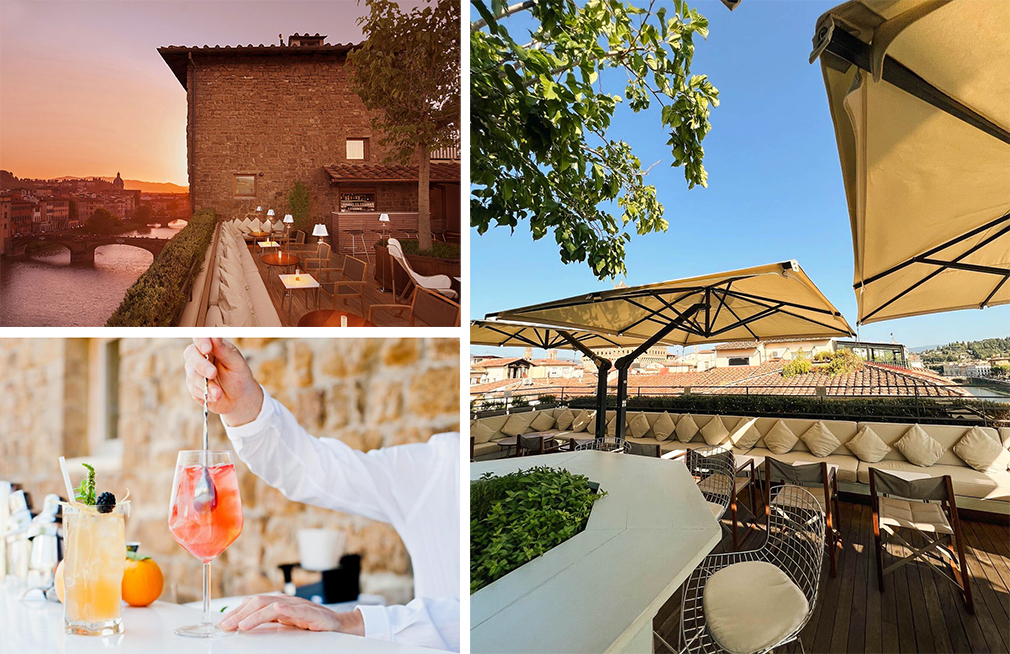
For Rooftop Drinks: La Terraza at Hotel Continentale
There are quite a few rooftop bars in Florence, but the Hotel Continentale’s La Terraza is as good as it gets. Tucked on the top floor of the medieval Consorti tower, the views are understandably breathtaking with the River Arno, Brunelleschi’s Dome, San Miniato, Palazzo Vecchio, and Forte Belvedere all within sight. Order one of their signature cocktails, even the ones with unusual additions like bergamot juice and elderflower liqueur, and enjoy the views in this cool, yet sophisticated, high perch built in the Middle Ages for far less leisurely purposes.
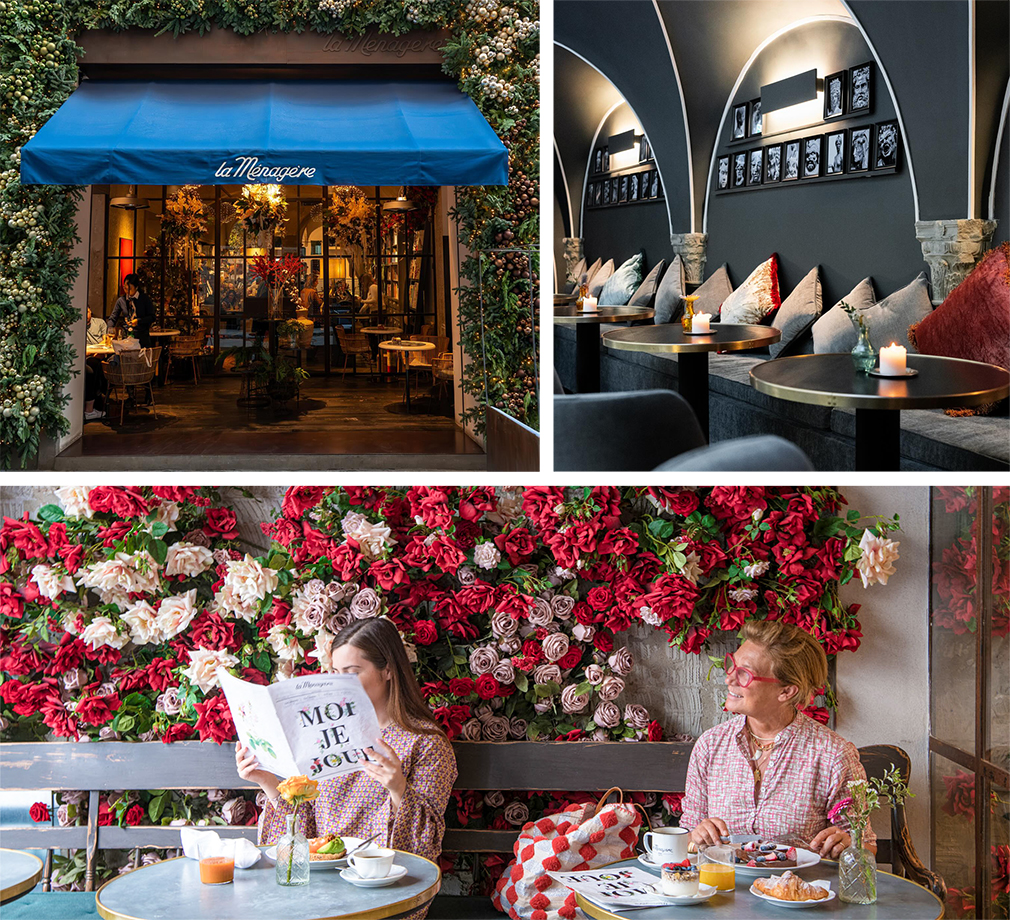
For an Espresso…and Everything Else: La Ménagère
La Ménagère is a concept space that started as Florence’s first homeware shop when it opened in 1896. These days, it’s that plus a coffee shop, cocktail bar, fine dining restaurant, bistro-style eatery, garden, and library of botanical books—all under one spacious roof. The interiors and terrace out front are a design lover’s dream, each space taking on a personality of its own with upcycled, contemporary furnishings, exposed walls, and vaulted ceilings. By day, it’s a bustling boutique and atmospheric place to have tea, a cappuccino, or a meal at the bistro. By night, it’s a romantic dinner spot with live music (usually jazz) on Fridays and Saturdays in the basement, too.
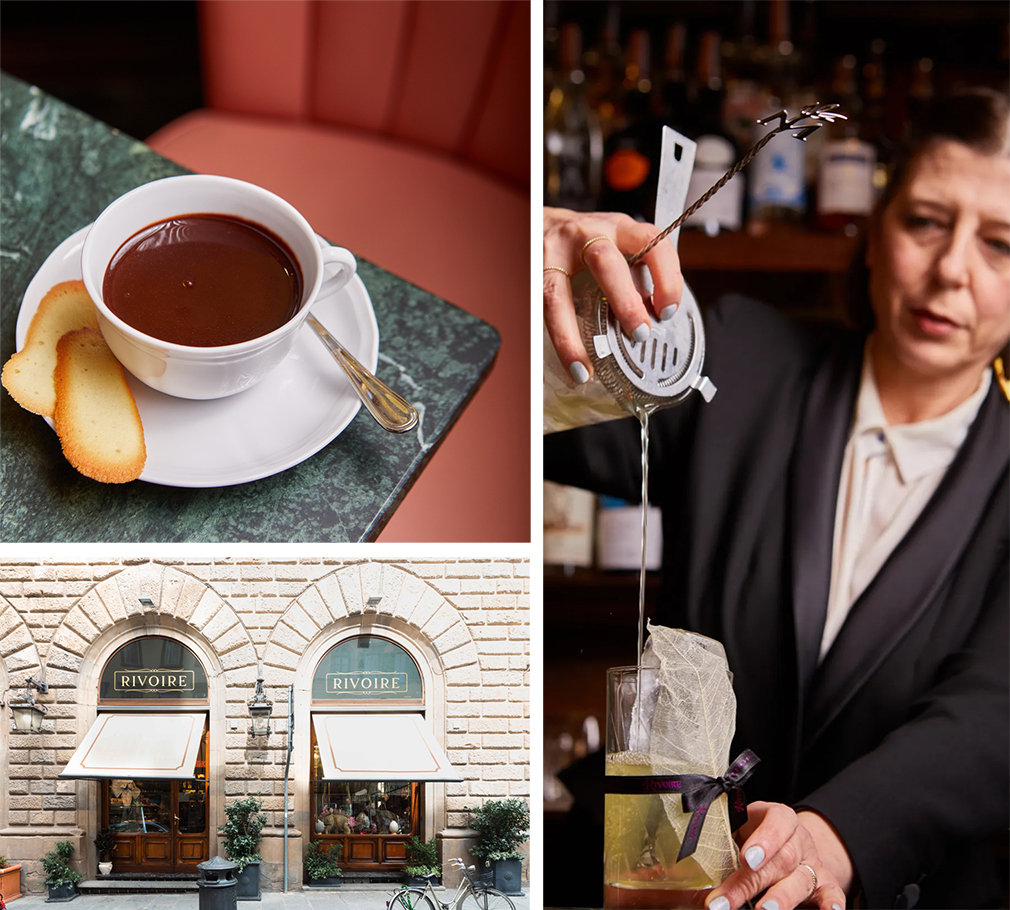
For the Florentine Classics: Caffè Rivoire
Negroni, hot chocolate, and espresso are famously on the menu at Caffè Rivoire, a former 19th-century steam chocolate factory turned caffè, then cafe and cocktail bar more recently. This is the spot to try on all of the Florentine traditions in a place that’s made history more than once. Order your espresso standing up at the bar, a hot chocolate on a crisp morning, and a negroni at the place that served one of the first in the city. It’s worth mentioning that their hot chocolate is slightly famous too, following the same secret recipe that once wooed nobles and politicians in the 19th century.
Where to Shop in Florence
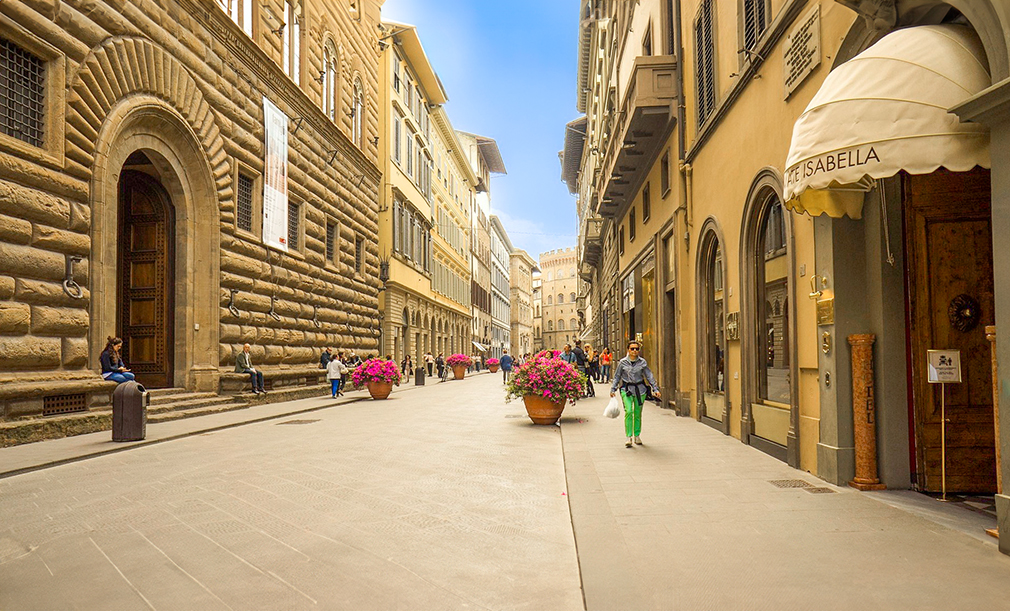
For Haute Couture: Via Tournabuoni
Connecting Ponte Santa Trinita to Piazza degli Antinori, Via Tournabuoni is the high fashion epicenter of Florence. In centuries past, this is where Roman walls and palazzos once stood. Today rows upon rows of designer storefronts do instead. Gucci, Prada, Pucci, Cartier, and Bulgari all have a home on Via Tournabuoni, as does the Museo Ferragamo, a fashion museum dedicated to the life and work of the Italian shoe designer Salvatore Ferragamo.

For Tuscan Food Staples: Mercato di Sant’Ambrogio
Located on Piazza Lorenzo Ghiberti on the east side of the city, Mercato di Sant’Ambrogio is where you can mix and mingle with locals as you shop for Tuscan food staples like olive oil, wine, jam, honey, cheese, pasta, cured meats, and more. It’s open every morning from 7 a.m. to 2 p.m. We recommend doing your shopping first and then snagging a seat at Trattoria da Rocco inside the market for lunch, a reputable spot for an inexpensive and traditional feast made with the produce sold on-site.

For Artisan Goods: Oltrarno
Artisans and independent workshops abound in Oltrarno, the neighborhood just across the River Arno from Florence’s historic center. Oltrarno has a long history of craftmaking that dates back to the Middle Ages. Today, there’s a new wave of skilled makers keeping the artistic spirit and Florentine traditions alive in mediums that range from leather to paper, ceramics, linen, and costume jewelry. Some of the boutiques and workshops to get you going are Oro e Colorefor gilded and painted works of art, Il Torchio for traditional paper marbling and bookbinding, Madova for exquisite leather gloves, Angela Caputi or Nokike Atelier for fashion and jewelry, and Arte Decorativa di Simone Fiordelisi for gorgeous Florentine mosaics and marble inlays.
Things to Do in Florence
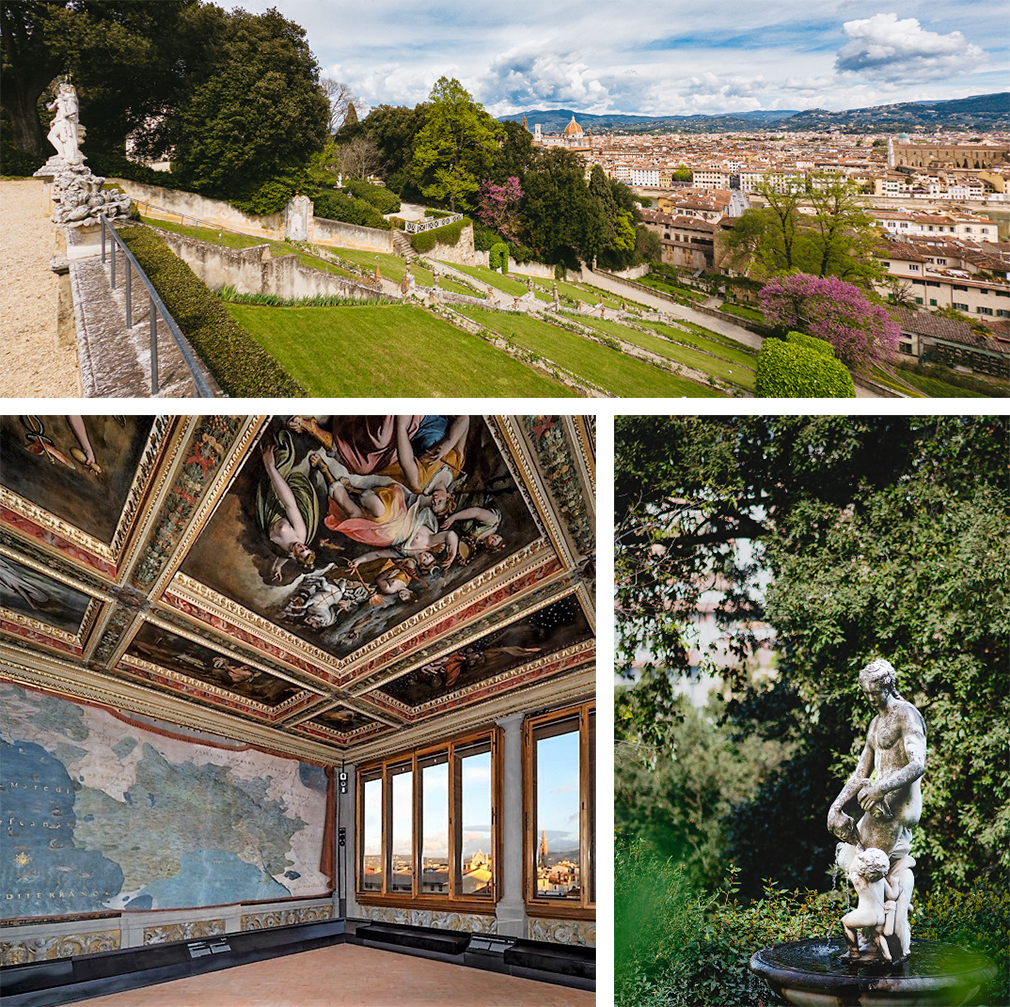
Visit the City’s Gardens & Galleries
Florence is the birthplace of the Renaissance and nowhere is it more apparent than inside its gardens and galleries. From the sweet-scented paths of the Bardini, Boboli, and Rose Garden to the glorious galleries of Uffizi and dell’Accademia, soak in the history and homage to a bygone era. All the recognizable names, from the Medicis to Botticelli, Michelangelo, da Vinci, Galileo, and Donatello suddenly take on new life as you come face-to-face with the works their revered minds and hands put together centuries ago.
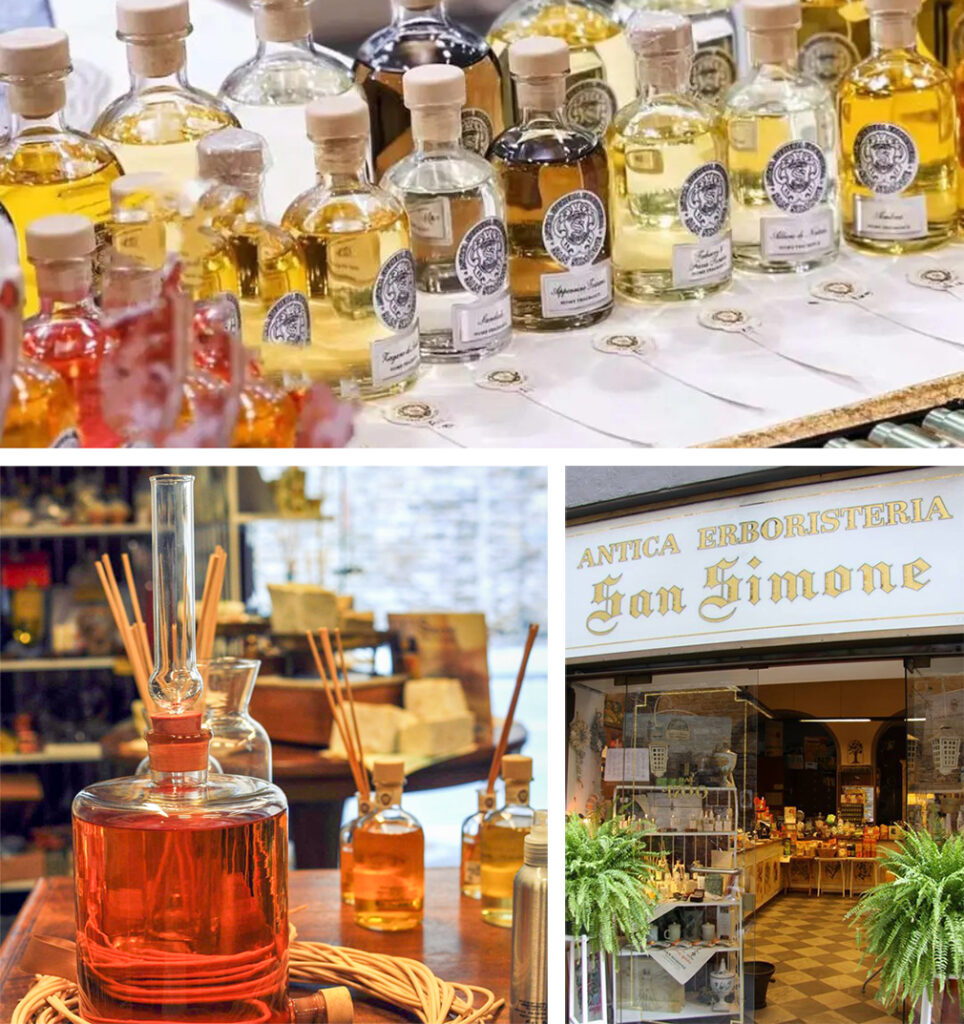
Make Your Own Perfume
Florence is the capital of perfume, and you’ll spot perfumeries and apothecaries all over town, many of them still looking and feeling like the 13th-century origins they come from. Officina Profumo Farmaceutica di Santa Maria Novella is the most famous and one of the first to appear in the city back in 1211. If you’d like to do more than shop and sniff, you can also craft your own scent with the help of a master perfumer. These perfume-making workshops can be found at perfumeries all over town, but Antica Spezieria Erboristeria San Simone’s is one we can personally vouch for. Many of them will keep your recipe safe for when your handcrafted potion runs out.
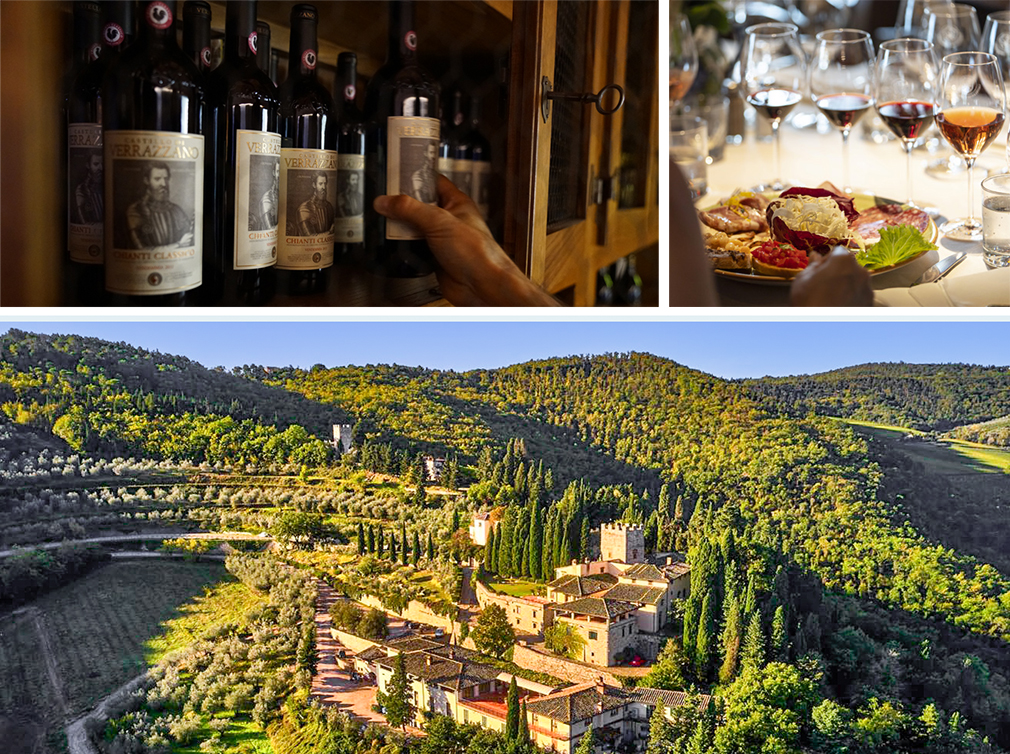
Taste and Tour the Tuscan Vineyards
No trip to Tuscany is complete without a visit to the vineyard-coated hillsides, glass of Chianti Classico or Brunello di Montalcino swirling in your glass. Many of the vineyards within a short drive of Florence offer guided tours and wine and food pairings at their historic cellars and vineyards. A few spots to check out: Biondi Santi Tenuta Greppo, Castello di Verrazzano, Castello di Ama, and Badia a Coltibuono. It’s the perfect half-day activity to link up with a visit to storybook and scenic cities like Siena, Lucca, and Pisa.
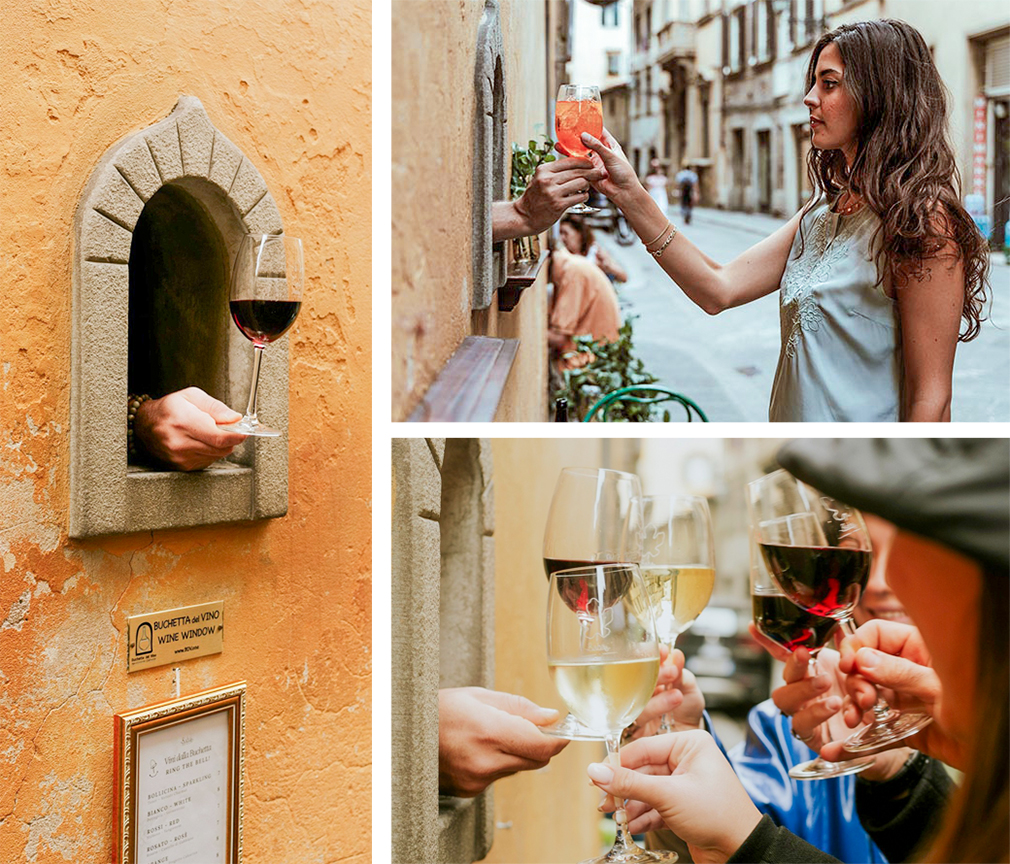
Order a Glass of Wine Through a Window
Since the 16th century in Florence, many a bottle of vino has been passed through what’s called a wine window, or buchette del vino in Italian. These arched and doored cutouts in the stucco began popping up in the city when Cosimo de’ Medici, the ruler at the time, decided local wine growers could sell their wine directly to consumers tax-free and without a proper restaurant or bar to do so. While many of Florence’s former functioning wine windows have been filled in by bricks or covered with wood, about 150 still remain operational. Babae in Oltrarno is one of the most famous, but we recommend simply ordering a glass at whichever buchette you bump into first. You’ll know you’ve found one that’s operational by the animated and eager lines out front, an open door with a bell inside to ring, or with a simple knock on the closed wood door to see if you get an answer.




